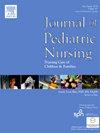Examination of the implementation determinants of skin-to-skin care in the pediatric cardiac Intensive Care Unit
IF 2.3
4区 医学
Q2 NURSING
Journal of Pediatric Nursing-Nursing Care of Children & Families
Pub Date : 2025-08-21
DOI:10.1016/j.pedn.2025.08.008
引用次数: 0
Abstract
Introduction
Skin-to-skin care (SSC), where parents hold their unclothed baby directly on their bare chest, is regarded as best practice for hospitalized infants. SSC is not routine for infants with complex congenital heart disease (cCHD) in the Pediatric Cardiac Intensive Care Unit (PCICU). SSC is understudied and the contextual factors influencing its implementation in the PCICU are unknown. This multisite, multi-methods study using the Tailored Implementation for Chronic Diseases implementation determinants framework aimed to identify the contextual factors influencing the implementation of SSC in the PCICU.
Methods
We interviewed stakeholders across two US PCICUs, one with previous implementation experience of SSC and one with little to no implementation experience. We used purposive snowball sampling, representing the interdisciplinary team of clinicians (n = 25) and parents (n = 21) at each site, until we reached thematic saturation. Clinicians completed a suite of valid and reliable surveys of acceptability, feasibility, and appropriateness. Descriptive statistics were calculated for the acceptability, feasibility, and appropriateness measures, with comparative analysis across clinician characteristics. Cross-cutting key themes were generated from a combined inductive and deductive approach to content analysis.
Results
On a five-point Likert scale, clinicians rated their acceptability (mean = 4.7, SD = 0.4), feasibility (mean = 4.2, SD = 0.7), and appropriateness (mean = 4.5, SD = 0.5) of SSC in the PCICU within the agree/completely agree range. Cross-cutting themes included knowledge, communication, role clarity, resources, and safety.
Conclusions
Findings will be the foundation for implementation mapping, where identified barriers and facilitators are linked with evidence-based implementation strategies that can be tested to enhance the implementation of SSC in the PCICU.
检查皮肤对皮肤护理在儿科心脏重症监护病房的实施决定因素
皮肤对皮肤护理(SSC),即父母将未穿衣服的婴儿直接放在裸露的胸部上,被认为是住院婴儿的最佳做法。在儿童心脏重症监护病房(PCICU), SSC并不是患有复杂先天性心脏病(cCHD)的婴儿的常规手术。SSC尚未得到充分研究,影响其在PCICU实施的背景因素尚不清楚。这项多地点、多方法的研究使用了慢性病量身定制实施决定因素框架,旨在确定影响慢性疾病重症监护病房实施SSC的背景因素。方法我们采访了两个美国PCICUs的利益相关者,其中一个有SSC的实施经验,另一个几乎没有实施经验。我们使用有目的的雪球抽样,代表每个地点的临床医生(n = 25)和家长(n = 21)的跨学科团队,直到我们达到主题饱和。临床医生完成了一套有效可靠的可接受性、可行性和适当性调查。描述性统计计算可接受性、可行性和适当性措施,并对临床医生的特征进行比较分析。交叉的关键主题是从内容分析的归纳和演绎相结合的方法中产生的。结果采用李克特5分制量表,临床医生对SSC在PCICU的可接受性(平均4.7,SD = 0.4)、可行性(平均4.2,SD = 0.7)和适宜性(平均4.5,SD = 0.5)评分均在同意/完全同意范围内。交叉主题包括知识、沟通、角色清晰度、资源和安全。研究结果将成为实施绘图的基础,其中确定的障碍和促进因素与基于证据的实施战略相关联,可以对这些实施战略进行测试,以加强在PCICU中实施SSC。
本文章由计算机程序翻译,如有差异,请以英文原文为准。
求助全文
约1分钟内获得全文
求助全文
来源期刊

Journal of Pediatric Nursing-Nursing Care of Children & Families
NURSING-PEDIATRICS
CiteScore
3.70
自引率
8.30%
发文量
291
审稿时长
65 days
期刊介绍:
Official Journal of the Society of Pediatric Nurses and the Pediatric Endocrinology Nursing Society (PENS)
The Journal of Pediatric Nursing: Nursing Care of Children and Families (JPN) is interested in publishing evidence-based practice, quality improvement, theory, and research papers on a variety of topics from US and international authors. JPN is the official journal of the Society of Pediatric Nurses and the Pediatric Endocrinology Nursing Society. Cecily L. Betz, PhD, RN, FAAN is the Founder and Editor in Chief.
Journal content covers the life span from birth to adolescence. Submissions should be pertinent to the nursing care needs of healthy and ill infants, children, and adolescents, addressing their biopsychosocial needs. JPN also features the following regular columns for which authors may submit brief papers: Hot Topics and Technology.
 求助内容:
求助内容: 应助结果提醒方式:
应助结果提醒方式:


